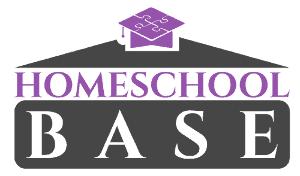Public Domain, Free Use, Creative Commons: What’s the Difference?
If you find an awesome resource online and download it for free- what exactly does free mean?
Obviously the first meaning would be that you didn’t have to pay money for the resource.
However, in what respect is the use of that item free? Can you print multiple copies for use in your home? Can you share it with others in your homeschool group?
What about uploading it and sharing it on your own blog? Can you use the images to make your own resource and share that?
There are various definitions of freedom when it comes to the thousands of no-cost resources available online. How you are able to use something depends on its license.
Homeschool Commons is organized into three broad categories for license:
Free Use
This is probably the easiest to understand in terms of how you may use a resource. Free use simply means that the download was free, but the material itself is copyrighted by an individual or company.
You are free to use the material in your home and probably in any class you might be teaching.
You may not share a free use item with others, including emailing, printing, or uploading to another site without express permission by the copyright holder.
Creative Commons
A creative commons license is actually a group of licenses that allow the copyright holder to specify how a work can be used and shared. There are four basic choices the copyright holder can make:
- Attribution- this simply means you must give credit to the original source when sharing or using the work.
- NonCommercial- the work may not be used in commercial projects.
- No Derivatives- the work must be re-shared as a whole without making changes.
- Share Alike- the work must be shared under the same copyright as its original copy.
With these four choices, there are several licenses that can be attached to a work. Familiarize yourself with these licenses and their specific restrictions. Creativecommons.org has a nice run-down of what each license allows you to do with a work.
Public Domain
A work is in the public domain if its copyright has expired, if there was never a copyright on the work, or if it is specifically designated as no rights reserved.
Wikipedia describes it as follows:
Works are in the public domain if the intellectual property rights have expired, if the intellectual property rights are forfeited, or if they are not covered by intellectual property rights at all. Examples include the English language, the formulae of Newtonian physics, the works of Shakespeare and Beethoven, and the patents on powered flight.
In a general context, public domain may refer to ideas, information, and works that are “publicly available”, but in the context of intellectual property law (which includes copyright, patents, and trademarks), public domain refers to works, ideas, and information which are intangible to private ownership and/or which are available for use by members of the public.
Any work that is designated public domain or otherwise falls into the public domain is available for use in every way. These are the truly free resources.
You may copy, share, upload, download, recreate, and otherwise use these works in any personal or commercial projects.
You may copyright any derivative works you create, but you cannot copyright the original work itself. Anyone, anywhere may use the original content.
Find out how can you use public domain content in homeschooling projects.
Last modified: October 20, 2016






